#Date Port Arrive Depart
Text
From the Freedom Flotilla, April 27 2024:
On Thursday afternoon, the Freedom Flotilla Coalition was contacted by the Guinea Bissau International Ships Registry (GBISR), requesting an inspection of our lead ship – Akdenez. This was a highly unusual request as our ship had already passed all required inspections; nevertheless, we agreed. The inspector arrived on Thursday evening. On Friday afternoon, before the inspection was completed, the GBISR, in a blatantly political move, informed the Freedom Flotilla Coalition that it had withdrawn the Guinea Bissau flag from two of the Freedom Flotilla’s ships, one of which is our cargo ship, already loaded with over 5000 tons of life-saving aid for the Palestinians of Gaza.
In its communication informing us of this cancelation, the GBISR made specific reference to our planned mission to Gaza. It also made several extraordinary requests for information, including confirmation of the ships’ destination, any potential additional port calls, and the discharge port for humanitarian aid and estimated arrival dates and times. It further demanded a formal letter explicitly approving the transportation of humanitarian aid and a complete manifest of the cargo.
Again, this is a highly unusual move from a flagging authority. Normally, national flagging authorities concern themselves only with safety and related standards on vessels bearing their flag, and are not concerned with the destination, route, cargo manifests or the nature of a specific voyage. Just like when you register your car, the authorities don’t require you to detail to them every place you are going to go with the car.
Sadly, Guinea-Bissau has allowed itself to become complicit in Israel’s deliberate starvation, illegal siege and genocide of Palestinians in Gaza. Israel is showing the world the extent to which it will go to deny Palestinians the aid they need to stay alive, in direct contravention of International Humanitarian Law, UN Security Council resolutions, and two orders of the International Court of Justice.
[...] without a flag, we cannot sail. But, this is not the end. Israel cannot and will not crush our resolve to break its illegal siege and reach the people of Gaza. The people of Gaza and all of Palestine remain steadfast under the most horrific, unimaginable conditions. We take strength from their incredible, inexplicable ability to maintain their humanity, dignity and hope when the world has given them no reason to do so.
It is our responsibility to keep that hope alive. WE WILL SAIL.
The Freedom Flotilla, which was set to depart from Turkey on the 27th of April with 5000 tons of life-saving aid, has now been delayed because Israel and the United States has pressured Guinea Bissau to withdraw its flag from the Flotilla's lead ship.
Seeing as how their tactics worked on Guinea Bissau, organizers now fear that Israel and the US will exert the same pressure on whichever country the Freedom Flotilla attempt to register their ship under next.
To help the Freedom Flotilla reach Gaza, please keep an eye out for further updates from the organizers. Right now, as of April 27th, they're asking people to help boost their visibility, and to donate to their member campaigns.
For more info, see their webpage.
#from the river to the sea palestine will be free#free palestine#palestine#israel#gaza#freedom flotilla
6K notes
·
View notes
Text
"USS TEXAS departed Brooklyn Navy Yard on January 8, 1931, 3 weeks after my Dad reported onboard for his first duty. Arriving at Guantanamo Bay on Jan 16, 1931, she patrolled the waters between Cuba, Gonaives, Haiti, Panama, and Cristobal, Balboa, Perlas Islands in the Canal Zone, traveling through the Panama Canal on March 23 and after a port call at San Diego, arriving at her home port of San Pedro, CA on April 21, 1931. She traveled a total of 8,708 nautical miles during this deployment."
USS TEXAS (BB-35) in Guantanamo Bay, Cuba
Credit: C.A. Moss collection
Posted by Ron Moss on the Battleship Texas Foundation Group Facebook page: link
Date: January 16-30, 1931

#USS Texas (BB-35)#USS Texas#New York Class#Battleship#Dreadnought#Battleship Texas#Warship#ship#Guantanamo Bay#Cuba#January#1931#interwar period#United States Navy#U.S. Navy#US Navy#USN#Navy#my post
62 notes
·
View notes
Text

An Act of May 26, 1924, Public Law 68-139, 43 STAT 153, to Limit Immigration of Aliens into the United States for Other Purposes
Record Group 11: General Records of the United States GovernmentSeries: Enrolled Acts and Resolutions of Congress
Dept. of State May 26 1924 Division of Publications (a circular date stamp) Sixty-eighth Congress of the United States of America; At the First Session Begun and held at the City of Washington on Monday, the third day of December, one thousand nine hundred and twenty-three. AN ACT To limit the immigration of aliens into the United States and for other purposes. Be it enacted by the Senate and House of Representatives of the United States of America in Congress assembled, That this Act may be cited as the "Immigration Act of 1924." IMMIGRATION VISAS. SEC. 2 (a) A consular officer upon the application of any immigrant (as defined in section 3) may (under the conditions hereinafter prescribed and subject to the limitations prescribed in this Act or regulations made thereunder as to the number of immigration visas which may be issued by such officer) issue to each immigrant an immigration visa which shall consist of one copy of the application provided for in section 7, visaed (sic) by such consular officer. Such visa shall specify (1) the nationality of the immigrant; (2) whether he is a quota immigrant (as defined in section 5) or a non-quota immigrant (as defined in section 4); (3) the date on which the validity of the immigration visa shall expire; and (4) such additional information necessary to the proper enforcement of the immigration laws and the naturalization laws as may be by regulations prescribed. (b) The immigrant shall furnish two copies of his photograph to the consular officer. One copy shall be permanently attached by the consular officer to the immigration visa and the other copy shall be disposed of as may be by regulations prescribed. (c) The validity of an immigration visa shall expire at the end of such period, specified in the immigration visa, not exceeding four months, as shall be by regulations prescribed. In the case of an immigrant arriving in the United States by water, or arriving by water in foreign contiguous territory on a continuous voyage to the United States, if the vessel, before the expiration of the validity of his immigration visa, departed from the last port outside the United States and outside foreign contiguous territory at which the immigrant embarked, and if the immigrant proceeds on a continuous voyage to the United States, then, regardless of the time of his arrival in the United States, the validity of his immigration visa shall not be considered to have expired. [full document and transcription at link]
22 notes
·
View notes
Text

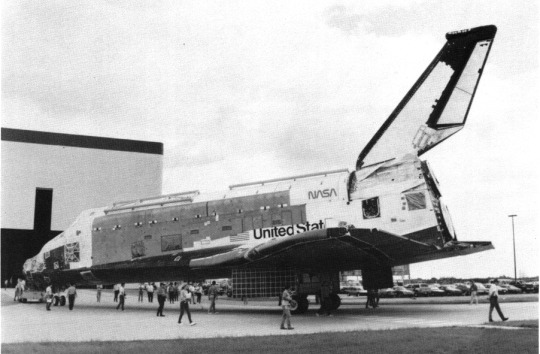
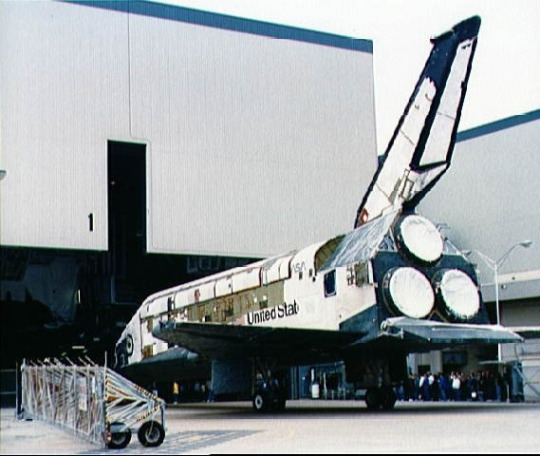
Space Shuttle Columbia arrives at Orbiter Processing Facility (OPF) entrance after its roll over from the orbiter maintenance and refurbishment facility. At the OPF, OV-102 will be processed for the STS-28 Department of Defense (DOD) dedicated mission. Technicians monitor OV-102 as it is towed via its landing gear by a ground handling vehicle. View looks from the aft section of OV-102 forward. Orbital maneuvering system (OMS) pods and space shuttle main engines (SSMEs) have been removed. Protective covers are visible on SSME ports and dome heatshield.
Date: January 23, 1989
NASA ID: S89-28090, NIX-S89-28109
source, source
#STS-28#Space Shuttle#Space Shuttle Columbia#Columbia#OV-102#Orbiter#NASA#Space Shuttle Program#Orbiter Precessing Facility#OPF#Kennedy Space Center#KSC#Florida#January#1989#my post#video
37 notes
·
View notes
Text
Extended Shadow and Bone Timeline [Part 1]
It's autumn when the first trip to the Fold occurs.
At the beginning of Shadow and Bone, Alina's regiment marches from the military encampment at Poliznaya to Kribirsk. It takes them two weeks to get there. Alina gets her first glimpse of the Fold standing on the Vy, the wide road that had once led from Os Alta to the port cities on Ravka's western coast.
It is explicitly stated that the autumn sun was warm overhead. Alina takes notice of both the green and gold smells of autumn and the soft breeze at her back.
Alina almost gets trampled by the Darkling's coach before entering Kribirsk, and she spends the rest of the day at the Documents Tent. At dusk, she gets her first glimpse of the Grisha pavilion. The air is noticeably cooler.
Later at night, Alina sneaks out to meet Mal, and the plumes of their breath are visible in the cold air. In fact, it's cold enough for her to wish she had taken the time to grab her scarf and gloves.
The next morning, Mal and Alina are boarding the sandskiff and entering the Fold for the first time. Barely thirty minutes later, the volcra attack happens, and Alina's power is revealed. The skiff returns, and the survivors are taken to the Grisha tent. The bright autumn sun is clearly visible in the sky, and the flags above the tent are fluttering in the breeze.
Alina meets the Darkling, and her power is confirmed. She doesn't even get to speak to Mal before she departs for the Little Palace.
Additional information:
Establishing the date of the winter fete:
The first Malina reunion takes place in Chapter 14, on the night of the winter fete. In Chapter 13, it's stated that the King and the Queen are hosting the final winter fete at the end of the season. We're not given any specific date, but in Chapter 14, when she's arriving at the fete, Alina takes notice that the spring has barely begun to show itself. She runs away later that night, and in Chapter 16, when the second Malina reunion takes place outside of Ryevost, Alina explicitly states that she'd escaped from the palace well over a week ago. In Chapter 17, she wonders about Mal's life in the past five months.
Over the next few days, they keep a brutal pace, until they reach a village on the northwestern side of the Petrazoi. The festivities of the butter week are taking place. In Chapter 17, it's stated that the holiday takes place in the week before the spring fast. Alina's description of the customs, especially the mention of blini (a form of Eastern European pancake) corresponds with the Eastern Slavic holiday known as Maslenitsa. This suggests that we should probably stick to the Old (Julian) Calendar, rather than the New (Gregorian) Calendar.
Based on the information above, Alina's timeline at the Little Palace spans over five months and two seasons. And if we could calculate the possible date of the winter fete, we could also determine the approximate timeline of the whole story.
Establishing the date of the butter week:
Maslenitsa (also known as Butter Lady, Butter Week, Crepe Week or Cheesefare Week) is celebrated during the last week before the Great Fast. It's the eighth week before Eastern Orthodox Pascha [i.e. Easter].
Since Easter and its holidays are moveable feasts, the date of the celebration has to be computed to the first Sunday after the ecclesiastical full moon that occurs on or soonest after March 21.
In the Northern Hemisphere, the March equinox equals the spring equinox, and while some of the churches have adopted the revised New Calendar, the Russian Orthodox Church still uses the Old Calendar, which sets the date of Orthodox Easter anywhere between April 4 and May 8.
It's explicitly stated that Malina's second reunion takes place 'well over a week' after the winter fete, and the choice of words suggests that we should read 'well over' like 'less than a week, but still more than a half'. However, this is where our timeline starts to blur: all we know is that 'over the next few days' they are keeping a brutal pace, until they reach a village where the festivities of the butter week are taking place. Initially, Alina thinks it might be Sunday.
The approximate calculation says that at least 18 days have passed between the winter fete and the butter week festival. Fixing the date of the fete to the spring equinox sets the festival on the second week of April. This doesn't seem to fit with the Old Calendar, because our Butter Week is the eighth week before Easter, and in this case, Ravkan Easter falls outside the specified frame.
However, given that there is no mention of Easter in this world, we can only assume that the Ravkan butter week actually corresponds more with the pre-Christian celebrations of the upcoming spring, which were later adopted by the Orthodox church. It's worth mentioning that in pre-Christian times, blini were considered to be a symbol of the sun due to their round form. Traditionally, they were prepared at the end of winter to honor the rebirth of the new sun.
To confirm that the Ravkans are indeed using the Old Calendar, and that fixing the date of the winter fete on the spring equinox makes sense, we should take a closer look into the feast of Sankt Nikolai, the only other explicitly mentioned holiday in Ravka.
Establishing the date of the feast of Sankt Nikolai:
In Chapter 13, there's a mention of the feast of Sankt Nikolai, which takes place in winter. It seems to mirror the Christian celebration of the feast of Saint Nicholas, which falls on December 19, according to the Old Calendar.
According to The Lives of Saints, a table should be set for Sankt Nikolai on the darkest night of the year. In our world, this would mirror the December solstice, the day with the shortest period of daylight and longest night of the year. On the Old Calendar, the winter solstice occurs around December 25. It's also known as midwinter.
In Chapter 13 of Shadow and Bone, it's mentioned that the feast of Sankt Nikolai is celebrated with huge bowls of dumpling soup and kutya made with honey and poppy seeds. In Orthodox tradition, predominantly Eastern Slavic, kutya is a ceremonial grain dish served during the Christmas season or as part of a funeral feast.
On the Old Calendar, Christmas takes place on January 7, which could potentially explain why it is explicitly stated that the 'final' winter fete takes place at the end of the season. The festivities have probably started with midwinter.
Canonically fixing the date of the feast of Sankt Nikolai on the date of the winter solstice, we are creating a headcanon in which every change of season comes with a big holiday.
Final thoughts:
If the final winter fete happens five months after the events on the Fold, and the date is set to March 21, then Shadow and Bone starts somewhere between late October and early November.
#shadow and bone#shadow and bone meta#grishaverse meta#grishaverse worldbuilding#grishaverse#the grisha trilogy#leigh bardugo#grishaverse timeline
26 notes
·
View notes
Text
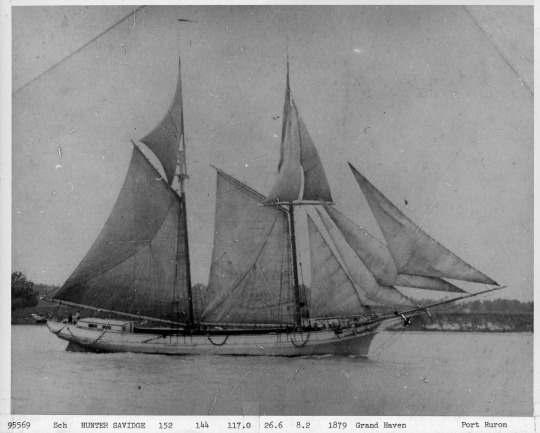
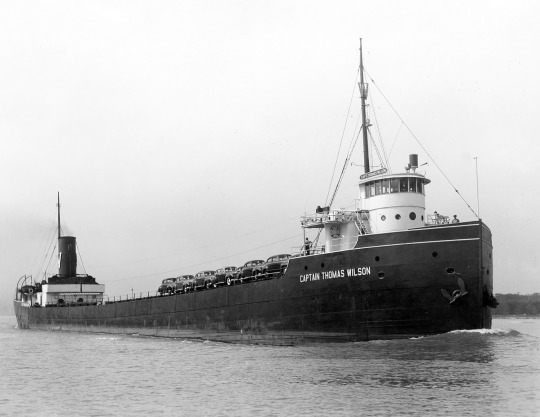
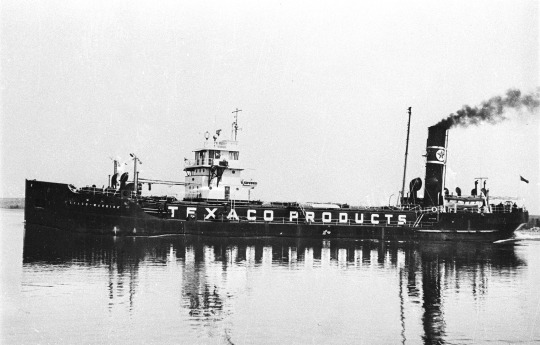

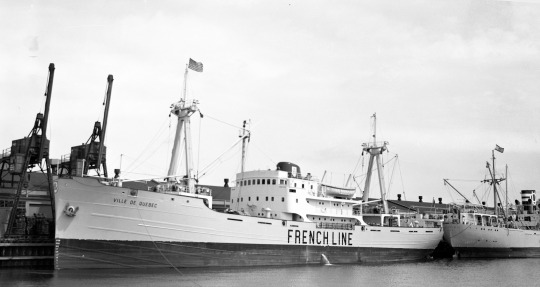
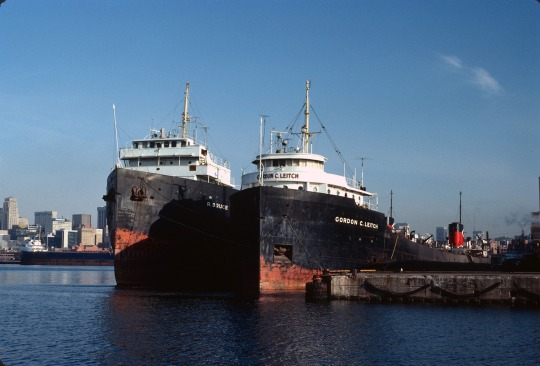
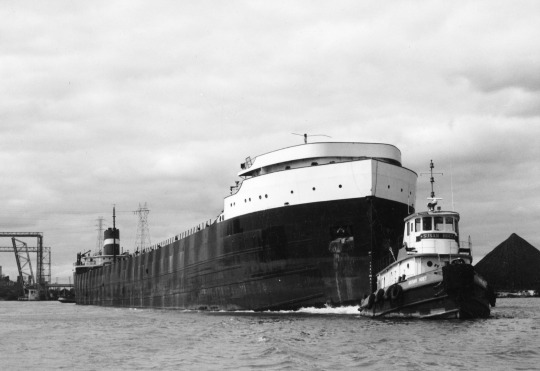
Today in Great Lakes shipping history. August 20th.
1899: The HUNTER SAVIDGE (two-mast wooden schooner, 117 feet, 152 gross tons, built in 1879 at Grand Haven, Michigan) capsized in a squall or tornado in Lake Huron. Five survivors, including Capt. Fred Sharpstein, were rescued from the overturned schooner by the steamer ALEX MCVITTIE. However, five lost their lives, including the captain’s wife and son, the ship’s owner’s wife and daughter, and the mate. Capt. Sharpstein patrolled the beaches looking for the bodies of his wife and son for months, but they were never found. The wreck was found in 1987 near Grindstone City, Michigan.
1900: CAPTAIN THOMAS WILSON was launched at Port Huron for the Wilson Transit Co.
1964: TEXACO WARRIOR hit bottom and settled in the Welland Canal with a punctured tank at Thorold South near Bridge 10. The ship was refloated and resumed service. It was scrapped at Sorel, QC, in 1978
1969: INDUSTRIAL TRANSPORT arrived at Toronto, Ontario, with fuel oil on her maiden voyage.
1969: PETER ROBERTSON, sold for scrap and anchored in western Lake Ontario, dragged her anchors in a storm and landed on the beach near Jordan Harbour, Ontario.
1972: VILLE DE QUEBEC was a Seaway trader on the Great Lakes from 1955 to 1958 and returned inland for three trips in 1959. The ship sank off the coast of Albania due to heavy weather on this date as c) SUZY. It was en route from Durres, Albania, to Patras, Greece. 11 members of the crew were lost, and only seven survived.
1985: R. BRUCE ANGUS, in tandem tow with the ULS steamer GORDON C. LEITCH (i) behind the tug IRVING CEDAR, arrived at Setúbal, Portugal, where they were broken up.
1986: WILLIAM CLAY FORD, departed her lay-up berth at the Rouge slip in tow of Gaelic tugs. She was taken to Detroit Marine Terminals on the Rouge River, where her pilothouse was removed to be displayed at the Dossin Great Lakes Museum on Detroit’s Belle Isle.
9 notes
·
View notes
Text
Separatist and irredentist movements in the world
Martinique
Proposed state: Republic of Martinique
Region: Martinique, France
Ethnic group: Martinicans
Goal: independence
Date: 1950s
Political parties: Martinican Independence Movement
Militant organizations/advocacy groups: -
Current status: inactive
History
1st century - Arawak settlements
11th century - Carib arrival
1502 - Christopher Columbus lands in Martinique
1635 - French claim over the islands
1636, 1658 - the Caribs rise against the settlers
1674 - Dutch conquest attempt
1693, 1759, 1762, 1779, 1794-1815 - British occupation/attacks
1815 - France regains control over the island
1789, 1815, 1822 - slave rebellions
1848 - end of slavery
1902 - volcanic eruption
1946 - Martinique becomes an overseas department
1962 - foundation of the Anticolonial Youth Organization of Martinique
1970s - greater autonomy
1978 - creation of the Martinican Independence Movement
2009 - French Caribbean general strikes
2023 - adoption of the Martinican flag
The French settled in Martinique in the 17th century and had to face many skirmishes and revolts from the indigenous inhabitants, most of whom were killed or expelled.
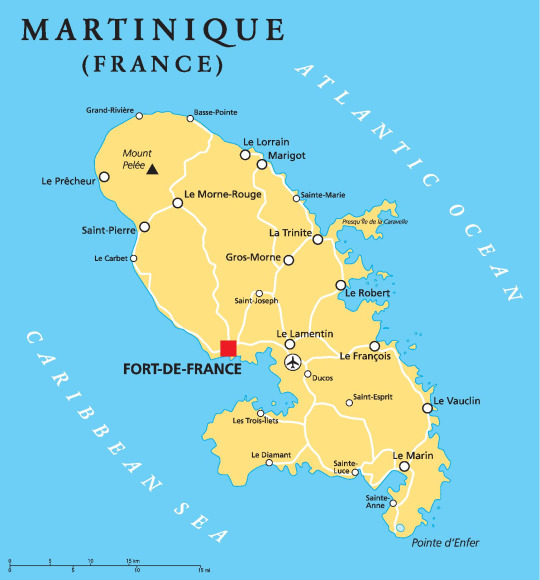
The island served as a home port for French pirates and was under British occupation on several occasions. Martinique was the first French overseas territory in which slavery was abolished.
In 1902, a volcanic eruption destroyed the former capital city of St. Pierre. The campaign for full independence began in the 1950s, during which several riots broke out. After the general strike, the French president ruled out independence but offered a referendum and more autonomy.
Guadeloupeans
The majority of the population is Afro-Caribbean (80%), but there are also Chinese, European, Indian, Lebanese, and Syrian minorities.
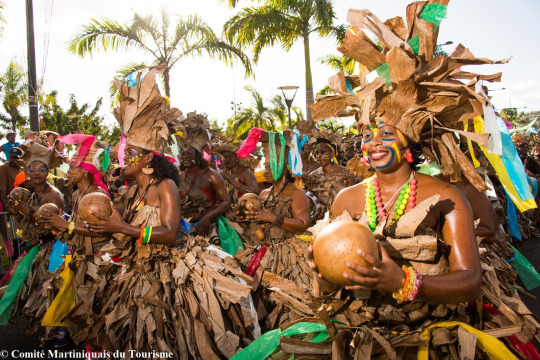
The official language is French, but Martinican Creole is widely spoken. Catholicism is the main religion (91.6%), but there are also Baháʼí, Hindu, and Muslim communities.
Vocabulary
(French - Martinican Creole - English)
Martinique - Matinik/Matnik - Martinique
Mouvement Indépendantiste Martiniquais - Mouvman endépandantis matinitjé/matiniké - Martinican Independence Movement
Organisation de la jeunesse anticolonialiste de la Martinique - ? - Anticolonial Youth Organization of Martinique
7 notes
·
View notes
Text
Dear Hvaldimir,
I know this is not your real name: It’s simply the name that kind Norwegians gave you when you first turned up off the northernmost coast of Norway just over four years ago. (Hval is Norwegian for whale.)
Now, you’ve been spotted off the coast of southwestern Sweden. Since you can’t identify yourself, we can’t be certain, but beluga whales comfortable with humans are an absolute rarity in that region. Your arrival there highlights the extraordinary work of military animals. You and your fellow animal warriors are, in fact, indispensable.
Hvaldimir, your many fans still remember how, one day in April 2019, you simply turned up, presenting yourself to Norwegian fishers in the Norwegian Sea. You seemed to be looking for human company, and as soon as the fishers took a closer look, they discovered your harness. “Equipment of St. Petersburg,” it read in English, and it had a mount for a GoPro underwater camera. Had you traveled from Russia? The Russian city of Murmansk is very close to where you made contact with the Norwegians. Marine experts—real and self-appointed—suggested you’d been trained by the Russian armed forces.
Andreas Fahlman, the research director at Sweden’s Kolmarden Zoo, told Swedish National Television that the visiting whale may in fact be you, and that mammals in the employ of the Russian Armed Forces are trained to, for example, “guard a naval base or certain vessels. But it’s also about finding different objects underneath the water’s surface.”
Russia, like the United States and other countries, has a long history of using animals in its military operations. Indeed, animals employed by armed forces everywhere work hard. The Romans infamously thought the Alps would keep them safe from intruders, but they hadn’t reckoned the possibility of Hannibal enlisting elephants. With the aid of nearly 40 elephants and more than 30,000 troops, the Carthaginian general and his men succeeded in crossing the mountain range and advancing on Rome.
Horses, of course, have been central to battles for as long as war has existed. Though they’re still used for mostly ceremonial purposes (such as the fine displays of British military horsemanship during the funeral of Queen Elizabeth II and the coronation of King Charles III), most mounted regiments have been turned into mechanized regiments, where soldiers travel in vehicles such as armored personnel carriers. But such is the military’s affection for its most crucial animal colleagues that originally mounted regiments (known as cavalry, from caballus, the Latin word for horse) that they’ve kept their names.
Dogs—“four-legged fighters”—have been similarly central to war efforts, and no technology to date can do what they can. “You’ll find U.S. military working dogs serving wherever American troops do,” the U.S. Defense Department’s four-legged fighter webpage explains. During World War I, for example, dogs joined some 6 million horses and mules and tens of thousands of horses and camels in the war effort. Pigeons carried messages better than the technology of the day was able to, and cats caught the rats proliferating in the trenches. Canaries and mice warned of toxic fumes. Today, animal fighters’ training is every bit as rigorous as that of human soldiers, because they have to be equally good.
“Since they took on the risky tasks of initial entry or first reconnaissance of sensitive places, they were really highly respected team members,” Belgian ex-soldier Bram Couwberghs, who served with German shepherds and Belgian Malinois in Afghanistan and Lebanon (and at home on counterterrorism operations), told me. “And they’re really an excellent search asset for weapons caches, hidden IEDs, luggage at airports, containers in ports, and goods hidden in places like ships and trucks.” So central was the military dog Cairo’s effort in the killing of Osama bin Laden that his handler, a Navy Seal named Will Chesney, went on to write a book about him.
Marine mammals such as you, Hvaldimir, are intelligent and made for life underwater, which makes you as indispensable to naval operations as dogs, horses, and their fellow terrestrial animals are to army operations. Your entry into military service, though, is more recent. For nearly six and a half decades, the U.S. Navy has trained sea lions and bottlenose dolphins to explore the undersea environment, search for targets of interest to the military, and “engage” those targets, which might mean marking the location of a mine, attaching grabber devices to underwater objects so they can be removed, or patrolling ships against undersea saboteur divers. No robot has this skill set either.
The Soviet Union launched a similar program in the late 1970s, nearly two decades after the U.S. Navy did. “Within the next year, the Soviets could train marine mammals to be used in military operational systems such as diver assistance and equipment recovery in the Black Sea. The next steps, possible within 2 years, might be training of the animals for more sophisticated tasks such as placement of packages on ships, as well as for use in areas outside the Black Sea,” the CIA wrote in a top-secret 1976 memo, which has since been declassified.
“Recent evidence indicates that a Soviet capability to train the animals for use in the open-ocean [sic], at least in limited military and intelligence-gathering roles, may now be available,” the memo added. It had been a rocky road for the Soviets, who were so short on marine mammal expertise that they enlisted the services of some of their country’s outstanding circus artists, who wereused to performing with seals. In the end, the Soviet Navy did manage to (forgive the pun) get an undersea mammal program off the ground at its Sevastopol base. Around this time, the U.S. Navy had also begun training beluga whales, which can swim deeper and live in colder waters than dolphins or sea lions, and later the Soviets added beluga whales, too.
The rest is well-known: the Soviet Union collapsed, and Ukraine (including Crimea, with its port of Sevastopol) gained independence. Even though the Soviet Navy could keep operating at the port of Sevastopol, the aquarium there was taken over by Ukraine, which repurposed the animals for service among children with disabilities. After Russia illegally annexed Crimea in 2014, the Russian Navy relaunched the mammal program. Just before the February 2022 full-scale invasion of Ukraine, the Russian Navy is reported to have put two dolphin pens at the entrance to Sevastopol. Before that, it had put its dolphins to work at its Syrian base in Tartus. Submarine analyst H. I. Sutton surmises that the intelligent mammals’ role consisted of counter-diver operations. As Sutton discovered shortly after you—Hvaldimir—turned up in Norway, Russia’s Northern Fleet had also established whale pens at its Olenya Bay base, not far from the Russian-Norwegian border.
Yet, despite being essential to military operations, military animals get shockingly little recognition. To be sure, both the U.S. and the Soviet marine mammal programs were classified for a long time, but military dogs and horses are well-known. Yes, military animals have starred in documentaries and films, including Dog (released last year), which features a U.S. Army Ranger, played by Channing Tatum, and Lulu the Belgian Malinois as they travel to the dog’s handler’s funeral. And yes, more than 70 extraordinarily brave dogs, and pigeons (and one cat, but no sea mammals) have been awarded the prestigious PDSA Dickin Medal for Gallantry. This January, Bass—a U.S. Marine Corps four-legged special operations warrior who has served in Somalia, Iraq, and Afghanistan—became the award’ 75th recipient. The Belgian Malinois was recognized for his bravery in carrying out “350 explosive sweeps and 46 missions to capture high-value targets,” especially his clearance of a mined building while under attack by Taliban fighters.
But apart from a touching memorial to military animals in London’s Hyde Park, the U.S. War Dogs Memorial in New Jersey, and a few small memorial sites around Europe, there’s little permanent tribute to animals’ extraordinary contributions to our defense efforts and the many lives they’ve saved.
The animals, of course, have no way of knowing whether they serve a democratic government that merely needs to defend its territory or a dictator keen on invading its neighbors.
That’s why, Hvaldimir, you’ve done a good deed by unwittingly achieving worldwide celebrity. Thanks to Hvaldimir, a global audience is now aware of the presence of working animals in armed forces, whether on behalf of allies or adversaries.
We’re all hoping you’ll be able to make your way back to the Norwegian Whale Reserve, the fjord turned into your home by generous Norwegian institutions and citizens, but your apparent excursion to Sweden has served as a useful reminder of the hundreds of animals who toil in obscurity in armed forces around the world without getting so much as a news mention.
4 notes
·
View notes
Text
Hallmark's January Lineup Led by Lacey Chabert's 'Wedding Veil' Sequel Trilogy: See the Schedule (ET Exclusive)

HALLMARK CHANNEL
All premieres are at 8 p.m. ET/PT, unless otherwise noted.
The Dog Lover's Guide to Dating
Starring: Rebecca Dalton and Corey Sevier
Premieres: Sunday, Jan. 1
Simon (Sevier) believes Chloe is the girl of his dreams, but can’t seem to win over her beloved pup. He enlists dog trainer Alex (Dalton) and soon finds himself wondering where his real connection might be.
The Wedding Veil Expectations
Starring: Lacey Chabert, Kevin McGarry, Alison Sweeney and Autumn Reeser
Premieres: Saturday, Jan. 7
In the first movie of this sequel trilogy, Avery (Chabert) and her husband Peter (McGarry) are in the midst of renovating the old house they’ve purchased, which is proving to be a bigger undertaking than they anticipated. Avery has some exciting news to share with him, but is waiting for just the right moment. Meanwhile, Avery’s mother-in-law, Grace (Karen Kruper), reconnects with a former beau, and Peter has concerns. Between that, the pitfalls of remodeling and navigating the politics of having a new boss at the museum, Avery is lucky to have Emma (Reeser) and Tracy (Sweeney), who offer support from afar as well as in person when they decide a video chat won’t suffice. When newlywed Tracy returns the antique wedding veil to Emma, the friends may find that they haven’t seen the last of its magic.
The Wedding Veil Inspiration
Starring: Autumn Reeser, Paolo Bernardini, Alison Sweeney and Lacey Chabert
Premieres: Saturday, Jan. 14
In the second movie of this sequel trilogy, Emma (Reeser) is teaching and working hard to prove she can step into the department chair role, as Paolo’s (Bernardini) lace shop is about to open. On track for her life plan, Emma feels strongly that things fall into place before she and Paolo grow their family. As the couple navigates their busy work schedules and finding the perfect time, Emma bumps heads with the current chair of her department and starts questioning her life choices. With support from Paolo –- and perhaps a little help from the veil -- will Emma find the courage to stop planning her life and start living it?
The Way Home
Starring: Andie MacDowell, Chyler Leigh, Evan Williams and Sadie LaFlamme-Snow
Premieres: Sunday, Jan. 15 at 9 p.m. ET/PT
The Way Home is a family drama following the lives of three generations of women -- Kat Landry (Leigh), her 15-year-old daughter, Alice (Laflamme-Snow), and Kat’s mother, Del (MacDowell), who are all strong, willful and independent. More than 20 years prior, life-changing events prompted Kat to move away from her small, Canadian farm town of Port Haven and she remains estranged from Del to this day. Alice has never met her grandmother and is unaware of the reasons for their fractured family. With Kat’s marriage coming to an end and having just been laid off from her job, she decides to return home after receiving an unexpected letter from Del urging her to come back. Although Alice is not thrilled, Kat and her daughter arrive at her family’s farm -- and the reunion isn’t what Kat had envisioned. As the three generations of women slowly work on finding their footing as a family, they embark on an enlightening journey none of them could have imagined as they learn how to find their way back to each other.
The Wedding Veil Journey
Starring: Alison Sweeney, Victor Webster, Lacey Chabert and Autumn Reeser
Premieres: Saturday, Jan. 21
In the third movie of the sequel trilogy, Tracy (Sweeney) is now head of the auction house and Nick’s (Webster) restaurant is such a success, he’s looking at expanding. Their success comes at a cost, however, as it gives them little time to see each other. The couple agree to make time for their long overdue honeymoon. They head to Greece as it’s the perfect place to relax and sightsee. When a travel delay costs the couple their hotel room, they get the opportunity to stay on a remote island nearby. Is it possible the veil is once again working its magic and bringing them exactly where they need to be?
Glacier Park Romance (working title)
Starring: Ashley Newbrough and Stephen Huszar
Premieres: Saturday, Jan. 28
Sparks fly when Hannah (Newbrough), an expert in avalanche forecasting, brings her new technology to Glacier National Park and faces pushback from the director of Mountain Rescue (Huszar), who relies more on intuition and common sense. Their dual approach bring more than forecasting to the forefront of their hearts.
HALLMARK MOVIES & MYSTERIES
All premieres are at 9 p.m. ET/PT.
Family History
Starring: Janel Parrish and Niall Matter
Premieres: Sunday, Jan. 8
Genealogist Sophie McClure (Parrish) is an expert at digging up the past and bringing families together. When her close friend Jonathan (Morgan David Jones) urgently needs to find a bone marrow donor, it brings his twin brother (and Sophie’s old flame) Jackson (Matter), back into her life. With Jackson’s help, Sophie must use her skills to track down the brothers’ long-lost birth father, a man they never even knew existed, in time to save Jonathan’s life. Ultimately, growing closer to Jackson on this search gives Sophie the push to finally explore the mystery of her own adoption.
Click this LINK to read the full article at ET online.
#news#hallmark movies#hallmark original series#schedule#first look#photo preview#link#the dog lover's guide to dating#the wedding veil expectations#the wedding veil inspiration#the wedding veil journey#glacier park romance#new year new movies#the way home#season 1#hallmark channel#family history#hallmark movies & mysteries#rebecca dalton#corey sevier#lacey chabert#autumn reeser#alison sweeney#kevin mcgarry#paolo bernardini#victor webster#ashley newbrough#stephen huszar#andie macdowell#chyler leigh
8 notes
·
View notes
Text
1/28/23
Flight TN (Air Tahiti) 101 has stopped in Papeete for a layover on the way to Auckland.
Last night, I departed from SFO, and transferred planes at LAX.
I will spend a moment in Papeete before boarding a flight again, toward New Zealand, and the date line.
Once in Auckland, I will make my way to the harbor, to board the Majestic Princess.
The scheduled departure of the boat was delayed by three hours, to 10 P.M., due to weather conditions.
There is a fair chance of rain on most of the days that I could check the forecast for in New Zealand and Australia.
On the way here, I watched Elvis, read some of Doctor Zhivago, and listened to downloads.
1/29/23
Arrival in Auckland is met with transportation to the Auckland harbor.
It takes very little delay to gather myself after the flight and the change in time.
Many of the arriving flights had been delayed or rescheduled, according to signage at the airport, due to the flooding of the runway.
I board the Majestic Princess, unpack, shower, and tour the ship’s amenities. This includes a trip to the bar, and the consumption of four Long Island Iced Teas. Shortly after, I am able to sleep, after I last woke in California, on the 27th.
1/30/23
It was past midnight when I woke up and noticed that the ship was in motion. I laid awake for a moment before deciding upon staying conscious. I ordered a veggie burger and an Americano, walked to the deck to see the ship’s wake, and then to the other side of the boat, to stop by the casino. It was closed.
The ship would broadcast the NFC Championship at 9 A.M. in the morning, after my breakfast. As the game went through the first quarter, I watched the ship turn into its port in Tauranga. I watched the game from a hot tub until half-time, at which point I changed clothes and ate on the deck, until the third quarter of the game.
It was about a half-mile walk to the trails, the name of the mountain (a.k.a. Mount Maunganui or “The Mount”) that overlooks the peninsula and harbor of Tauranga. I hiked up one side, and saw some sheep along the way. I walked down another trail that led me to the other side of the Tauranga peninsula.
I walked alongside the beach, into a mini-peninsula off the main beach. I did some window-shopping through the mid-peninsula before finding myself near the boat. It was simpler to board again, eat again, and fall asleep for a while. When I woke up, in the evening I ordered five plates of food to the room, and finished the meal while watching Marilyn Monroe and Jane Russell in Gentlemen Prefer Blondes.
It was early enough, when the movie was over, to get drinks at the bar, and check out the Freddie Mercury tribute concert at the Princess Theater.
1/31/23
The day was highlighted by a scheduled trip to the Hobbiton movie set, the filming location for the setting of the Shire in the Lord of the Rings and Hobbit trilogies.
Before I left the ship for the drive to the set, I watched the beginning of The Hobbit: An Unexpected Journey, until the moment right before Bilbo decides to embark on the journey with the dwarves.
The set is located on a farm, past a range of mountains when traveling from Tauranga.
The tour began highlighting areas where specific scenes from the movies were shot, and the discussion of camera techniques used in the movie. Different areas on the set were sized proportionally, to make any character appear larger or smaller in respect to it.
I could recognize these settings, and took many photos. The tour went around the set, and ended near the Green Dragon Inn, where I was served, by our tour guide, Calen, a cup of ale.
The drive to and from the set took about an hour and 15 minutes each way. The driver discussed major exports of the area, including timber, kiwi fruit, and dairy products. I recognized the Zespri brand name as we passed by the office building for the kiwi fruit company.
Return to the ship was followed by a meal and the next hour of the first Hobbit movie. I then went to the indoor pool for what was around two hours. Patrick McCullough performed in the Princess Theater in the evening.
2/1/23
The journey’s first full day at sea would consist of traveling from Tauranga to Wellington. It started early, with breakfast, but with little other activity until my visit to the casino. My initial $20 AUD transfer was gone in just a few spins. I waited to eat at Alfredo’s, where I would eat three times throughout the day. I resumed gambling, maintaining a bank for the slots while losing at the tables. I eventually hit a slots bonus that brought me to $280 AUD, after I had put in $140 AUD in total.
I watched the Maori ambassador’s presentation on traditions and mythology in the Princess Theater. This was followed by my next visit to Alfredo;’s, in the ship’s atrium. It was in the atrium that I then participated in a Haka dance with the ambassadors. Crew members began to set up a champagne waterfall, which I watched through, nearly to its completion. At 6:30 P.M., the officers of the ship were introduced at the waterfall ceremony. I took a glass of champagne from a nearby server and sat at Alfredo’s again. I began watching Alien: Covenant, but not to its conclusion, before the night ended.
There was a musical performance in the Princess Theater. I found it happening after participating in the guessing contest for the weight of a pig-sculpture in the art studio.
2/2/23
I have found myself waking up early, as was the case today. Upon arrival in Wellington, I am ready to explore the city. The bus takes me near the cable car, which runs up a hill to the botanical gardens. These gardens run towards the side and down the hill, and included native NZ species of flora, and more - a herb garden, rose garden, and greenhouse with a pond full of guppies. The downhill trail ends back near the parliament building, which I detoured around. I walked closer to the harbor-coastline area to the Maritime Museum. There were a few objects of interest there. A walk along the coastline took me to the Te Papa Museum, which exhibited nature-science, a NZ WWI display, abstract art, traditional Maori pieces and more. The bus to the ship gathered passengers right behind the museum. Back on the boat, I took a moment to decide whether to watch the movie being shown on the deck, Dakota, before changing, and watching it from a hot tub. I met two, from Korea, in the tub.
I went to the atrium, alternated alcoholic and non-alcoholic drinks three times, for six drinks total, before getting two Americanos saturated with brown sugar. The live music was okay. I watched the rest of Alien: Covenant and slept.
2/3/23
Another early day started at 5:30 A.M., until the hills around our destination port appeared around us at breakfast. The timing would allow for a load of laundry to be completed while the ship docked. In Port Shakespeare, shuttle buses took cruise-ship passengers to the town of Picton. A primary glimpse into the ocean water, from the Picton harbor beach, was very red - what I understood to be red algae. I kept walking for what was at least 2.5 hours round-trip.
It began to rain, most heavily when I decided to turn around, at the viewpoint on the trail labeled as the viewpoint for Queen Charlotte’s Sound. My shoes were a little moist, as was my passport, when I ended up back at the harbor. The couple I had met the day prior offered a pint of beer, which I drank rather quickly, before asking where I could get some soda. There was a nearby sandwich and soda shop. I stopped by, and walked through the street full of souvenir shops and restaurants, before ending up at a store, where I bought a bottle of Lawson’s Dry Hills Reserve Pinot Noir. Ideally, I would have gone on some sort of wine tour, but I did not. I was allowed to bring the wine back on board the boat.
The ship leaves Queen Charlotte Sound and turns right, to navigate southward on the southern island. It is picturesque, and I combine sightseeing from the lido deck with drinks from Alex and Whinn at the atrium’s Vines bar.
2/4/23
The ship docked in Lyttleton harbor, and I was in the initial queue to go ashore. Shuttles awaited for the journey into Lyttelton or Christchurch. Notes from my booked tour instructed me to board for Lyttelton and transfer in the port-city.
The tour bus went north around Governor’s Bay before taking the road over the mountain range that divides Christchurch from Lyttelton. Descent into Christchurch gave way to a view of the mountain-park for mountain bikers and zip-liners, and a more distant picture of Christchurch and New Zealand’s Alps. A stop was made for this moment, to observe.
Scottie, the tour guide, drove onto the streets of Christchurch while beginning to explain the effect of the hundreds of earthquakes that struck the city between 2010 and 2012. 70% of the city was rebuilt since that time, into the present day, in which the city has been reopened to cruise-ship passengers for its first year since. A wall of names downtown commemorates those lost.
Free time in the city would consist of walking by that memorial and along the river. This was followed by a few moments at the botanical gardens. There is much evidence of the effect that the earthquakes had still. In the more suburban areas, less so, as the “red zone” now delineates the area in which construction cannot take place due to risks, in the event of another earthquake. This zone was quite large, and took up most of the trip on our way to the beach in Brighton.
A few more winding roads through the jagged peninsulas wold lead to the port-city where we landed. I had a moment to stop at Eruption Brewing to down a lager on the deck.
There was a moment in the evening, at the Vines bar, as I read the next pages of Zhivago. This was followed by another moment, as I looked out the window to see three animals, apparently, jumping through the ship’s wake. I could identify the animal in the third instance as a penguin.
I kept drinking and eating, watched Morbius on the pool deck, and checked out the late-night dance in the atrium before calling it a night.
2/5/23
The ship docked at Port Chalmers in the early morning.
Upon entering the port-city, I walked through the main city street, up through a path by the Presbyterian Church, and to a garden that house a lookout over the harbor, the dock, and city hall. Buses were ready to take passengers to the city of Dunedin. The city center is an octagon-shaped block with a road for buses going horizontally through. It was pretty early in the morning, on a Sunday, and I would need to walk the same path twice t be there for various sites’ hours of operation. These sites included the rail station, the Toitū Otago Settlers Museum, and the Chinese Garden. I visited three churches, the First Church of Otago, St. Paul’s Cathedral, and the St. Joseph Cathedral. I attended mass at St. Paul’s until the communal prayers, then walked to the St. Joseph Cathedral, just before communal prayers.
I walked back to the octagon, and had fish and chips at a place called Social Club. This was followed by a visit to the Dunedin Public Art Gallery. This would conclude my visit to the city, as buses to the ship departed from the octagon.
I stayed wake into the early hours of the next morning, as the DJ took over the atrium/dance floor per usual. Midnight marked the arrival of my birthday.
2/6/23 - 2/8/23
It was a rather late night, the previous night.
Three days were spent to cross the Tasman Sea, into Australia.
I dined at the Crown Grill for my birthday festivities. The next day’s dinner would be in the Symphony Dining Room. On the next, dinner was at the Harmony Restaurant. The food at all three locations on the ship was delectable.
My stateroom is located near the front of the ship, which can apparently rock with the waves, as the ship presses forward. The movement could have been worse, but it did not go unnoticed. We were quite close to Tasmania on the night before we got there, and the going was pretty easy, much of the early morning consisting of cruising through the bay and into the Hobart port.
2/9/23
Dawn arrives as the ship arrives in the port of Hobart. I watched the ship dock in the morning light. The groups for excursions into Tasmania are assembled in the Princess Theater. Several groups prepare to board buses to the Bonorong Wildlife Sanctuary. I had looked into this excursion for an opportunity to see Tasmanian Devils. This was the first instance in which I had done so. There were several species native to Australia there as well, an abundance of kangaroos, some emus, birds, etc. We were bussed back towards the ship, stopping by the bridge for a photo-op across the bay from Hobart.
The bus dropped us off at the port, there was still about six hours to walk through the city. I started west, towards the other side of the port, and out into the respective peninsula. The University of Tasmania is located there, and a little further is a residential area in which I found a hotel bar that poured me a Cascade, a native Tasmanian beer. The path would lead back towards but past the ship, through downtown Hobart past various athletics facilities, through a fallen soldiers’ memorial, to a track meet in progress. This path continued through to the botanical gardens. I would check the time to be back on the boat, stopping by the war memorial, the ANZAC eye.
The Hobart Brewing Co. is located right next to the port, and I stop for a flavored beer.
2/10/23
The last day of the cruise is a day at sea, between Tasmania and Sydney. It is a fairly good moment. I found myself on the deck at times, in the atrium as the choir sang Oklahoma!, and dining in the Allegro Dining Room that evening. I had barramundi. The Noordam cruises alongside us, I observed, as the evening continued.
2/11/23
We arrived in the port of Sydney at around 5 A.M. I am ready to leave with my disembarkation group at 8 A.M. It’s a pretty good feeling, sunrise over the Sydney Opera House. I am not feeling any fatigue. The deal I booked online was a bus pass/hostel package, with plenty of distance to cover up the east coast of Australia. Accommodations are about a mile inland, near Town Hall. I dropped off my bags at the Nomads Hostel location and begin my first day of two in Sydney. Proceeding east past Town Hall is the ANZAC War Memorial and the botanical gardens. Along the path northward is the Art Gallery of New South Wales, made up of two separate buildings. There are a few nice pieces there, I’m not sure I recognized any in particular, maybe some artists here and there. I continued north through the gardens and past the Opera House again, towards the Sydney Harbor Bridge. At this moment in the day, I do not have any time constraints, but the walk over the bridge and back to the hostel took about 2 hours. It’s at this moment that I get ready to attend the performance of La Boheme at the opera house. This preparation includes the consumption of Somersby cider and jalapeño poppers at the hostel bar.
2/12/23
I made the route out to take for the second and last planned day in Sydney. It was through to the west via train to to the Olympic park, and then after a walk through it, a ferry ride back to the quay. It was a pretty lengthy trek. The bus left at 7 P.M., which left me some time to visit Bondi Beach, walk around there, and take the bus and subway back to the city center where I had left my bags, and where the Greyhound bus would depart from.
2/13/23
The bus ride has taken about 19 hours to Brisbane. This area of Australia is made up of national parks and Eucalyptus forests. I looked out the window for a good while until it was overwhelmingly dark outside, at which point I watched the last two episodes of the National Treasure series on my phone. Traffic increased as we approached the city of Brisbane. The Super Bowl was occurring, and I listened in. When I arrived, I walked to the Nomads hostel, and left my bags there before check-in at 3 P.M. The central business district is pretty nice, and it is fairly hot outside - I stopped by Starbucks for a refresher and an ice-water. The city is built alongside a river, and there’s a smaller arts part of the city as well on the other side of the river from the business district. This evening walk included three museums, a cozy park, and a ferris-wheel ride. I got a ticket for an evening concert - classical music, a chamber orchestra led by violinist Ilya Gringolts. I walked back to the hostel, checked in, showered, and got sushi. Then, I went to the concert.
2/14/23
The Brisbane train station is one block from the hostel. I got a vending machine espresso drink from the station before departing towards the Australia Zoo. I had seen a few episodes of Crikey! It’s the Irwins before my trip started. It was a good stop to make. I went around the zoo and ended up in the middle of it, where the crocodiles were. The crocodiles were from Australia, some with backstories on display. I liked the alligators as well, and they were from the U.S.A. I got an Icee by the African savannah exhibit, where there were zebras, giraffes, and rhinos. There was a tiger feeding. I got a salad before the Crocoseum show - trained birds flying from trainer to trainer, and crocodile feeding. There was a moment to stop by the animal hospital before going back to Brisbane. I had potato gnocchi for dinner.
2/15/23
It was a pretty nice, early morning. I got some fruit buns at Woolworth’s grocery store before my bus to Airlie Beach. This bus ride would take the rest of the day and the morning of the next. I got a long black from the station cafe. The Dallas Stars played, and I listened to that. I revisited some of my Youtube Music listening history from two or three years ago. This included “Moonshadow” by Cat Stevens., and “Let Me Go” by Alesso, Hailee Steinfeld, and Florida-Georgia Line.
2/16/23
Once in Airlie Beach, I decided to go on a boat ride to a nearby island. This is the southern part of the Great Barrier Reef. The boat, the Camira, sailed out to Whitsunday Island. We anchored by one side of the island to snorkel, and I made use of my underwater camera in pursuit of some colorful marine life. Once anchored by another part of the island, we hiked up to a lookout over the beach, and walked down to it as well. Lunch for me was a veggie burger. I tried the Strongbow and the Great Northern Brewing Co. “Super Crisp.” In the evening would be a moment to walk through Airlie Beach - the pools, the beach, and the harbor, where I got a pizza. The hostel pool area was closed, but I sat down and almost fell asleep there.
2/17/23
The bus to Townsville departed at 9:50 A.M., by which time I had walked through the town again, to McDonalds, Woolworth’s and a pharmacy, where I got a pin with turtles on it, for my backpack. The bus ride there took about five hours. The bus station is linked to the ferry system between the town and Magnetic Island, where I planned to stay for two nights. I stopped by the hostel, but I had forgotten to make a reservation. The other hostel on the map was in Picnic Bay, about a mile away. I walked with a resident on the trail there. The island is pretty nice, not too populated, and I had a squash salad and a beer flight at Maggie Island Brewery - a fresh cucumber beer stood out - the last one on the flight. After that, I did the laundry, considering the hike to West Point, as it began to rain.
2/18/23
Early morning, I had the cup ramen noodles I had, and waded in the pool with Louie, an Australian Shepherd. He swam across a few times, but I was preparing for my trip to Horseshoe Bay, on the other side of the island. This hike would start at the bay and go around the outer side to the north-east, down south, and towards the lookout, located closer to the center of the island, up a long flight of stairs. Adam, from the hostel, told me that I should bring carrots for the rock wallabies, if I intended on feeding them. I got these from the store at Horseshoe Bay. I walked on the trail as it presented itself, and although it was raining, I enjoyed looking at the beachfronts and flora. The informational guidepost mentioned that this island was a precautionary WWII lookout, used both by Australian and U.S.A. soldiers in that time. The lookout at the top was just two buildings. The Magnetic Island National Park entrance was nearby, where I waited for the bus. I rode to the south-eastern part of the island where the rock wallabies lived. I fed one a carrot immediately, gave one to some tourists who had scootered there, and with no other wallabies around, ate the last one. I missed the next bus back to Picnic Bay. There was a store nearby, where I got pasta, sauce, sour skittles, cheese, chips, and pineapple juice. I waited by the bus stop as the rain stopped and started again, before the next bus. I shared the pasta with some tourists from Germany.
2/19/23
I woke up in time to swim at the Picnic Bay beach, and then again at the hostel pool with Louie. I took the 10 A.M. ferry back to Townsville, and walked through a memorial park. I got a pizza by the Townsville beach, and some ice cream after that. The bus to Cairns would be at 2:40 P.M., and I walked the beach for a bit, got some beers as UFC played on T.V., and wandered back to the station. It was nighttime in Cairns when I got there.
2/20/23
The early morning consisted of breakfast at McDonalds, by the harbor, where I boarded the Evolution to scuba-dive. The bus stopped at two different locations for diving and snorkeling. We were given some instruction on how to dive, on the way there.I opted to dive twice. The first time I dove, a fellow diver, Josephine, and I linked arms with an instructor. We descended, and some things that stood out to me were the shark, and a fish that followed me about the size of my upper body. After the dive, I snorkeled. The ship, the Evolution, moved to its next location, the North Hastings Reef. This location had more coral, and we dove in a group of five, including the instructor. We saw a few more colorful fish, a few giant clams, sea cucumbers, and two more sharks. Both dives were about 15-20 minutes. I snorkeled again, after removing the self-contained underwater breathing apparatus. I saw a turtle, a lone jellyfish, and a few fish by the boat that looked like Dory from Finding Nemo. The ship made its way back to Cairns, where I received my PADI certificate for my dive. I stopped by a restaurant for some fried seafood and a XXXX beer, then got some gelato, proceeding to walk the length of the beach and turn around towards the hostel.
2/21/23
I opted not to go to the rainforest/gondola-trip nearby, where I was aware of a koala sanctuary. I got a falafel wrap, and proceeded to the Cairns Aquarium. It was a good way to wind down the trip, looking at the fish and turtles. I looked into the Carins Turtle Rehabilitation Centre, where we saw two turtles. Carlotta was missing a left flipper, and was adjusting to swim without it. There was another turtle that had a balance issue due to one of the pressure systems in the head. I went back to Gilligan’s for the afternoon, and went to the pool. I drank a lot that evening, and got drinks for some of my roommates.
2/22/23
My flight home would be at 6:10 P.M., and I walked all the way to the airport from the hostel, through the inner city instead of the beach, and through the Cairns Botanic Gardens and rainforest. I got there at around 2 P.M. I got some food and beer, a few mementos from the airport shop, and boarded the flight to Singapore. I would arrive there at around 11:00 P.M.
2/23/23
Early morning, and I have gotten on a train to the city, but I mistook which stop to transfer, and was stranded, as that was the last train. I exited the station and waved down a cab. I explained what I wanted to do in Singapore, and he took me where I wanted to go. We stopped first by the Gardens by the Bay, where the park structures were unlit. I ran around the park for a bit, then we proceeded to a lookout, where the Sands, the harbor, and the dam between the river and the sea were visible. We drove through the inner city, and stopped at Little India to eat. I had seafood noodles, the driver had an egg dish. We had some coffee, and I was not allowed to pay for the meal. The driver stopped by to get gas, as we went back to the airport. My flight would leave from Terminal 3. Most of the airport was closed, but I went to the Jewel and fell asleep in there for a few hours, where the waterfall would run, but was not for the night hours. A few more hours would conclude the trip.
3 notes
·
View notes
Text
Viet Nam Heritage Road
Embark on a journey of tranquility and cultural exploration with our meditation tour in Vietnam. Combining breathtaking scenic wonders and rich cultural experiences, our tour offers deep meditation sessions to seek inner peace and happiness.
Day 1: ARRIVE IN HANOI

Full-day private city tour. Hanoi, the post-colonial capital city, boasts a unique blend of Asian charm with tree-lined boulevards, French colonial architecture, serene lakes, pagodas, and temples. This comprehensive tour will take you to the most intriguing sights of Hanoi, starting with the Ho Chi Minh Complex, which includes Ho Chi Minh’s Mausoleum, his Stilt House, the Presidential Palace, and the nearby One Pillar Pagoda.
Next, we’ll visit the scenic Westlake and the Tran Quoc Pagoda, followed by a trip to Van Mieu or the Temple of Literature, an ancient site dating back to 1070, dedicated to the veneration of Confucius. Our journey continues with a visit to the infamous Hoa Lo Prison, historically referred to as the “Hanoi Hilton” by prisoners of war during the Vietnam War.

Escape the hustle and bustle of the chaotic world and immerse yourself in the present moment by directing your thoughts and emotions towards the purified land. Our special trip offers you the opportunity to rediscover your true self and experience inner peace and clarity through the practice of Buddhism.
The program included:
Buddha’s golden lessons
The art of touching peace
Peace in every step
Mindful breathing
Secret favour
Mindful talking
Compassionate practicing
Grateful meal
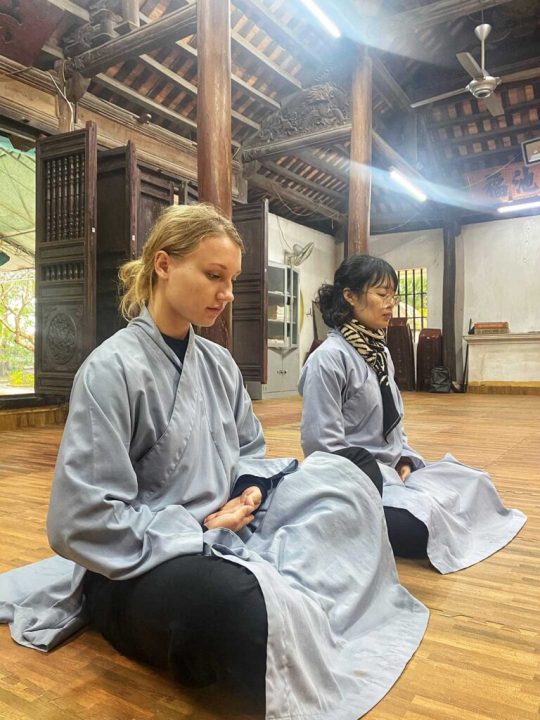
Overland to Ha Long Bay, which has been twice awarded the title of World Natural Heritage Site by UNESCO’s World Heritage Committee in 1994 and 2000. Upon arrival, we’ll check-in, enjoy a welcome drink, and receive a cruise briefing. Afterward, we’ll have lunch while cruising to explore the breathtaking Ha Long Bay, one of Vietnam’s most wondrous and scenic sights. Prepare to be amazed by the picturesque scenery, with over 3,000 limestone islets emerging magnificently from the clear and emerald waters. The bay is adorned with hundreds of peerless karst formations, beautiful grottoes, and caves.
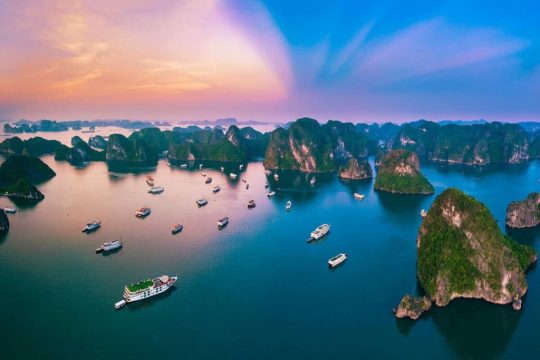
Wake up on the bay to the soothing sounds of waves and birds welcoming the new day. You will have the opportunity to witness the stunning sunrise over the bay while enjoying an invigorating Tai Chi session on the sundeck. After breakfast, we will visit a beautiful limestone grotto, followed by a leisurely walk back to the boat to capture a final glimpse of Halong Bay as we cruise back to the dock.

In the morning, embark on a boat journey to explore a captivating and untamed cave complex including Sang Cave, Toi Cave, Ba Giot Cave, and Nau Ruou. Witness the enchanting landscapes of mountains and rivers resembling Ha Long Bay in the picturesque region of Ninh Binh.
Afterwards, drive to Thanh Hoa to visit the Citadel of the Ho Dynasty, recognized as a world cultural heritage site in 2011. The citadel was built following the principles of feng shui and serves as a testimony to the flourishing of neo-Confucianism in late 14th-century Vietnam and its subsequent spread to other parts of East Asia. According to these principles, it was strategically situated in a landscape of exceptional scenic beauty, aligned with an axis that connects the Tuong Son and Don Son mountains, in the plain between the Ma and Buoi rivers. The citadel’s architecture represents an outstanding example of a new style of a Southeast Asian imperial city.
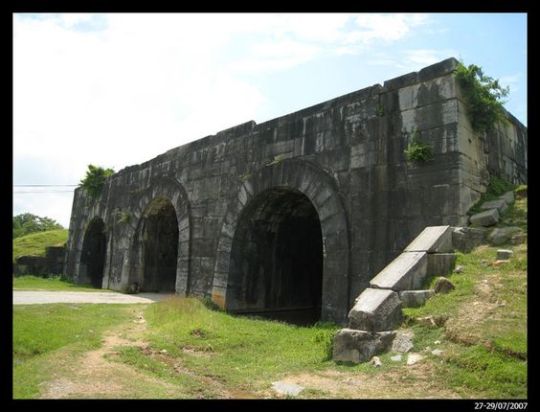

Driving to Hue, Vietnam’s last feudal capital, which has been recognized as a World Cultural Heritage Site since 1993. We will visit the Imperial Citadel, the Purple Forbidden City, and explore the bustling Dong Ba market.


After the breakfast, we will depart for Hoi An. This ancient town, with a history of 600 years, is an exceptionally well-preserved example of a traditional Asian trading port and has been recognized as a World Cultural Heritage Site since 1999. During our visit, we will explore its colorful pagodas, temples, ancient houses, narrow streets, and amazing bridges that showcase a unique architectural blend of Vietnamese, Chinese, and Japanese styles from the 16th century. In the late afternoon, we will take an excursion to Cam Chau village to witness the traditional lantern-making by the villagers. We will spend the night in Hoi An..
We are a team of experienced travel experts who have organized hundreds of buddhist spiritual retreat for customers from countries around the world. Our Online Customer Support team has many years of professional experience in the travel industry, and can assist with any questions related to your tour.
0 notes
Text
Urgent Vietnam Visa
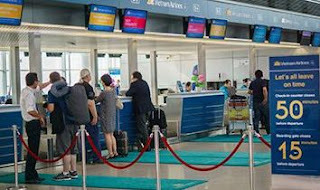
one of the leading Rush Vietnam Visa, over the recent many years, we have assisted individuals, families, and businessmen with advice, information about Vietnam visa and provided visa service to millions of clients with their visa applications - urgent vietnam visa. Whatever service you need, we are happy to tailor a package for your needs and budget. The concern on how to apply Vietnam visa on arrival might be a burning issue for those who have spent the first visit to Vietnam. This post will bring you a specific look on how to obtain Vietnam visa.
Rush Vietnam Visa was established to take away your biggest hassle of getting a visa for Vietnam as a tourist, businessman, investor, foreign worker, or his/her family member and follow-up papers to ensure your legal long-term stay in Vietnam through simple, fast and cost-effective procedures. Looking for a fast, convenient but secure way to get Vietnam visa? Applying a visa to Vietnam through us – Rush Vietnam Visa is fully legitimate, convenient and secure for passengers - vietnam visa urgent.
Complete the Vietnam visa online application form fill in the secured application form with required information such as full name, expected arrival date, expected port of entry, etc. After getting your request, we will take a careful look into your case, confirm with you the service fee as well as processing time via email or Whatsapp. After your payment, we will start processing your visa application with the Vietnam Immigration Department. You will get your visa approval letter also known pre-approved letter) and the entry-and-exit application form delivered to your email within the guaranteed time. You then print them out and complete the entry and exit form, prepare passport-sized photos, your original passport (valid for at least few months following your date of entry), and cash for the stamping fee. For more information, please visit our site https://entryvietnamvisa.com/
0 notes
Text
Exploring the Italian Riviera: Your Ultimate Guide to Portofino Cruise Port
Nestled along the stunning Italian Riviera, Portofino is a gem that enchants travelers with its postcard-perfect scenery, charming harbor, and vibrant atmosphere. As a popular stop for cruise ships navigating the Mediterranean, Portofino Cruise Port offers a gateway to this idyllic destination, inviting visitors to immerse themselves in its beauty and culture. In this guide, we'll delve into everything you need to know to make the most of your time at Portofino Cruise Port.
Arrival at Portofino Cruise Port: A Spectacular Welcome
As your cruise ship approaches Portofino, you'll be greeted by a breathtaking panorama of colorful buildings cascading down the hillsides, with the iconic harbor at its center. The sight alone is enough to evoke a sense of wonder and anticipation for the experiences that lie ahead.
Exploring Portofino: Must-See Attractions
Once you disembark at Portofino Cruise Port, you'll find yourself in the heart of this enchanting village. Here are some of the must-see attractions that await you:
Piazza Martiri dell'Olivetta: This picturesque square serves as the perfect starting point for your Portofino adventure. Lined with quaint cafes and boutique shops, it exudes an ambiance of laid-back sophistication.
Portofino Harbor: A visit to Portofino wouldn't be complete without strolling along its iconic harbor. Marvel at the luxurious yachts bobbing in the crystal-clear waters, and capture the quintessential postcard-worthy views of colorful buildings against the backdrop of the Ligurian Sea.
Castello Brown: Perched on a hill overlooking the village, Castello Brown offers panoramic vistas that are simply breathtaking. Explore the historic fortress, which dates back to the 16th century, and immerse yourself in Portofino's rich heritage.
Church of San Giorgio: Admire the elegant facade of this centuries-old church, which stands as a testament to Portofino's religious and architectural heritage. Step inside to discover ornate frescoes and serene atmosphere.
Hiking Trails: For nature enthusiasts, Portofino offers an abundance of scenic hiking trails that wind through lush forests and along rugged coastal cliffs. The paths offer spectacular views of the Mediterranean and provide a refreshing escape from the hustle and bustle of the village.
Culinary Delights: Indulge in Portofino's Gastronomy
No visit to Portofino would be complete without savoring its delectable culinary offerings. From fresh seafood caught daily to mouthwatering pasta dishes infused with local flavors, the village boasts a diverse array of dining options to suit every palate. Be sure to sample regional specialties such as pesto Genovese, focaccia, and trofie al pesto for an authentic taste of Ligurian cuisine.
Shopping in Portofino: Treasures Await
Whether you're in search of designer fashion, locally crafted souvenirs, or artisanal goods, Portofino offers a shopping experience like no other. Explore the narrow cobblestone streets lined with chic boutiques, artisan workshops, and elegant galleries, where you'll find unique treasures to commemorate your visit.
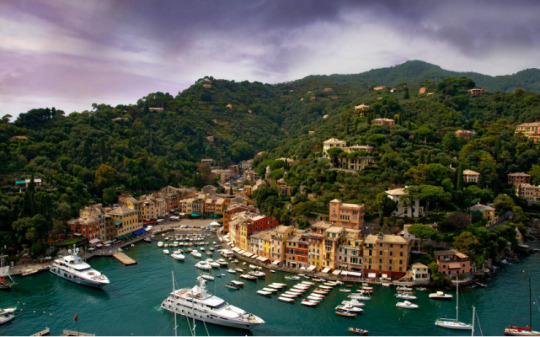
Conclusion:
As your day in Portofino comes to an end, you'll depart with memories that will last a lifetime. Whether you spent your time admiring panoramic views, savoring exquisite cuisine, or simply soaking in the timeless charm of this coastal paradise, one thing is certain – Portofino will leave an indelible mark on your heart, beckoning you to return again and again.
0 notes
Text
Seamless Travels with Top-Notch Tempo Travellers in Vishakhapatnam
Vishakhapatnam also referred to as Vizag and known as the “City of Destiny”, is a beautiful place to explore the green landscapes, beaches and lush greenery. It is also a major industrial centre with excellent ports. Whether you are a tourist looking forward to seeing the famous attractions of this beautiful city or a local planning a weekend trip in a group, having reliable transportation is a must in such instances. This is where Chiku Cab comes in as your trustworthy and reliable travel partner for group travelling using its tempo traveller in Visakhapatnam.
Why Choose Us?
Comfort: With luxury in mind, our Tempo Travellers are structured to provide optimum comfort during the journey. Comfortable, spacious seating with sufficient leg space and high-tech amenities makes travelling enjoyable without the least trouble.
Safety: Safety is the most important concern to us. We make sure that our Tempo Travellers go through timely maintenance check-ups so as to ensure they are in good condition during your travelling. Furthermore, our drivers are well-trained professionals who focus on safe driving techniques which ensure your smooth travel at all times.
Simple Booking: You can easilybook tempo traveller in Visakhapatnam with Chiku Cab as the booking process is so simple and easy. You can book the tempo traveller either by visiting our official website or just with a phone call at our customer service support number. All you need to tell is your pick-up location, preferred destination, date and time. We will handle the rest.
Convenience: You can benefit from the door-to-door service with Chiku Cab. Our drivers will pick you up at your chosen location and drop you off where necessary so that the entire driving experience is all about ease.
Affordability: We value customer's money and always seek to provide a better deal. In Visakhapatnam, we offer Tempo Traveller rental services that provide fair pricing without any hidden charges. As such people can have budget-friendly travel arrangements but not at the expense of quality assurance.
Services Offered by Us
Local Travel
For any trip within the Visakhapatnam area, including commuting to work running errands and going out for events in town, Chiku Cab is able to provide quality local transfer services. Our fleet of buses including sedans, SUVs and Tempo Traveller ensures that there is comfortableness in your journey within the city. Whether going fast to the office or catering for a local event, Chiku Cab offers dependable local transport services according to your preferences.
Outstation Travel
Are you planning a visit to the outstations of Vishakhapatnam? Then opt for Chiku Cab’s tempo travellers in Visakhapatnam for your outstation journeys. If you are travelling in a group then a tempo traveller is the best option among all other cab services as it has enough seats to carry people from up to 12 or more depending on the type of tempo traveller. Whether you want to explore the mesmerising Borra Caves, the beautiful Araku Valley or other famous attractions of Vishakhapatnam, our skilled and professional drivers will ensure a safe and comfortable journey throughout the whole travel.
Airport Transfers
Enjoy hassle-free airport transfers to and from the airport in Vishakhapatnam with Chiku Cab. Whether you are arriving or departing late at night or early in the morning, our skilled and courteous drivers will be at your service around the clock so that you never miss your flight. We value your time, that is why our drivers are punctual and ensure timely pick-up and drop-off. You just sit back and relax as we handle everything from navigating the traffic to finding parking.
Corporate Travel
Going for a business meeting, conference, or corporate event and need some means of transport then? Chiku Cab has specialized in corporate travel where it focuses on customized solutions that are designed to fulfil all your needs. We have professional drivers and comfortable vans with an excellent environment to conduct business during the travel. Your Transport transportation needs can be taken care of by Chiku Cab, thus allowing you to invest your energy and efforts in what is vital –the business.
Conclusion
Chiku Cab’s Tempo Traveller Rental in Visakhapatnam lets you discover not just Visakhapatnam but also its vicinity with utmost comfort and convenience. Whether you are organizing a sightseeing tour, a quick weekend getaway or a group outing our hassle-free transportation services can make sure that you and your company enjoy the ride. If you want to visit Visakhapatnam comfortably, we suggest booking a Tempo Traveller with our company.
1 note
·
View note
Text
Charting The Course: Shipping A Car From Hawaii To California
The idea of shipping a car from Hawaii to California might seem like an extraordinary journey, and indeed, it is. This venture entails embarking on a remarkable odyssey across the Pacific Ocean, necessitating meticulous planning, an understanding of uncommon terminology, and a firm grasp of logistics.
The Tropical Departure Point: Hawaii 🏝️
Hawaii, with its picturesque landscapes and tropical allure, is a dreamy place to own a vehicle. Yet, life often takes us on unexpected adventures, including the need to relocate to the mainland or sell a cherished vehicle. When such circumstances arise, shipping your car across the ocean becomes a compelling chapter in your story.
Unveiling the Options: Shipping Methods 🚢
Two principal methods are at your disposal for shipping a car from Hawaii to California:
RORO (Roll-On/Roll-Off): A practical option where your vehicle is driven onto a specialized vessel and securely lashed down. This method is lauded for its cost-efficiency.
Container Shipping: For those who cherish added security and protection from the elements, container shipping allows your vehicle to nestle safely inside a shipping container.
Navigating the Logistics 📝
Before your vehicle commences its aquatic journey, there are several critical logistical steps to steer through:
Paperwork and Legalese 📄
Securing the necessary documentation is the initial course of action. This includes the vehicle's title and registration. It's imperative to ensure your vehicle meets California's emission standards, as it will undergo a meticulous emissions test upon reaching the mainland.
Vehicle Preparations 🚗
Properly preparing your vehicle is crucial. This entails:
Fuel Tank Considerations: Prudent shipping etiquette dictates a nearly empty fuel tank, minimizing the risk of leaks during transit.
Extricating Personal Belongings: Items of a personal nature must be removed from the vehicle, aligning with strict shipping regulations.
The Glisten of Cleanliness: Presenting a pristine vehicle eases the inspection process and sets a high standard of care for your cherished possession.
Port Choices 🌊
The Hawaiian archipelago offers a variety of ports for departure, including those on Oahu, Maui, Kauai, and the Big Island. Your choice of port will impact the overall cost and duration of your shipping expedition.
Timetables and Scheduling 🗓️
The shipping schedule is subject to numerous variables. Availability, vessel departure dates, and chosen shipping method will all influence the timeline. The voyage typically spans a duration of five to seven days.
A Maritime Lexicon 🌊
As your vehicle begins its oceanic adventure, an understanding of some less common maritime terminology can enrich your journey:
Vessel Manifest: A comprehensive list detailing all cargo, including your cherished vehicle, aboard the ship.
Bill of Lading: A vital document, the Bill of Lading serves as a receipt for the transported goods and outlines the contractual agreement between the shipper (that's you!) and the carrier, typically a shipping company.
Port of Entry: In California, your vehicle will dock at a designated port of entry, where it will undergo customs and safety inspections.
Welcoming California 🌞
Upon your vehicle's triumphant arrival in California, it encounters a customs clearance process. This phase involves a comprehensive inspection to verify compliance with emissions and safety standards. Subsequently, your vehicle is released to you, and you can finally navigate the roads of the Golden State.
The Emissions Testing Hurdle 🚦
California, renowned for its strict environmental policies, requires all vehicles imported from beyond its borders to undergo an emissions test. Vehicles not meeting the state's emission standards may necessitate modifications to attain compliance.
Registration and Fiscal Matters 💸
Once your vehicle is on Californian soil, you'll need to register it with the Department of Motor Vehicles (DMV) and fulfill any applicable tax obligations. Preparedness with the requisite documentation, including the bill of lading and customs clearance documents, is paramount for a smooth transition.
Picking the Right Shipping Partner 🤝
Selecting a reputable and experienced shipping company is fundamental for a stress-free process. Conduct thorough research and comparisons among various providers to identify the one that aligns with your specific requirements and budget. Ensuring the company is both licensed and insured bolsters your peace of mind.
Navigating the Uncharted Waters 🌊
Shipping A Car From Hawaii To California may be an unconventional journey, but it's one that offers a unique perspective on the transport of cherished possessions across the vast Pacific Ocean. With meticulous preparation and attention to detail, your vehicle can seamlessly transition from the tropical haven of Hawaii to the sunny horizons of California, ensuring your beloved car safely finds its way to the mainland.
0 notes
Text
Lenovo has become active this month, especially in the current week. After launching new budget phones in India earlier this week, it launched another mid-range device, but this time in China, on Thursday. The company unveiled its S5 Pro smartphone, a mid-range camera-specific device aimed at consumers wanting better camera pictures along with other great features.
Design, Specs, and Camera
The S5 Pro has a metal unibody design. It has a 6.18inch IPS LCD Full HD+ display (with a resolution of 1080x2246p), having an aspect ratio of 18.7:9.
The performance is taken care of by Qualcomm’s powerful Snapdragon 636 processor, coupled with 6GB of RAM and 64GB of internal storage. The phone has a dual hybrid SIM slot to expand the capacity. There will be another variant too, with 6GB RAM/128GB option, which will be unveiled later. It runs on Android Oreo 8.1 out-of-the-box skinned in Lenovo’s own ZUI 5.0, which provides split-multitasking and dual accounts for specific apps. You can have 4 different accounts for a single app!
The phone has a decent 3,500mAh battery and also has a Type-C port.
Coming onto the camera department, then the S5 Pro houses a dual-rear camera setup of 12MP (f/1.8 aperture) plus a 20MP telephoto lens (f/2.6 aperture), for 2x zooming. The rear camera can shoot 4K videos @30fps.
On the front, there is a large 20MP (Sony sensor) selfie camera, inside the notch-yes there is notch too. The front camera can also take portraits, while the video shooting capability is up to 1080p. There is also a 3D face scanner which not has an AI face unlock feature but also helps in making the selfies even more better in terms of quality, according to the company.
Price
In China the S5 Pro will be shipped from October 21st 2018. It costs around CNY 1,300 for the 6GB/64GB model (around $190) which translates to about Rs.13,947.
The higher storage version of 128GB internal capacity is not available at this time. It will be arriving later. There was also no news on whether there will be an India variant of the S5 Pro or not.
Lenovo S5 Pro – Price, Full Specifications & Features
Launch Date
November 28, 2018 (Expected)
Brand
Lenovo
Model
S5 Pro
Operating System
Android v8.1 (Oreo)
Custom UI
ZUI
SIM Slot(s)
Dual SIM, GSM+GSM
SIM Size
SIM1: Nano
SIM2: Nano (Hybrid)
Network
4G: Available (supports Indian bands)
3G: Available, 2G: Available
Fingerprint Sensor
Quick Charging
Height
154.5 mm
Width
75.4 mm
Thickness
7.7 mm
Very Good ▾
Weight
170 grams
Below Average ▾
Colours
Ice Blue, Pure Gold, Crystal Black
Screen Size
6.2 inches (15.75 cm)
Screen Resolution
1080 x 2246 pixels
Aspect Ratio
18.7:9
Bezel-less display
Pixel Density
402 ppi
Best in Class ▾
Display Type
IPS LCD
Touch Screen
Capacitive Touchscreen, Multi-touch
Screen to Body Ratio (calculated)
83.05 %
Chipset
Qualcomm Snapdragon 636
Processor
Octa core (1.8 GHz, Quad core, Kryo 260 + 1.6 GHz, Quad core, Kryo 260)
Architecture
64 bit
Graphics
Adreno 509
RAM
6 GB
Internal Memory
64 GB
Expandable Memory
Up to 256 GB
Resolution
12 MP + 20 MP Dual Primary Cameras
Very Good ▾
Sensor
CMOS image sensor
Autofocus
Physical Aperture
F1.8
Flash
LED Flash
Image Resolution
4000 x 3000 Pixels
Settings
Exposure compensation, ISO control
Shooting Modes
Continuos Shooting, High Dynamic Range mode (HDR)
Camera Features
Digital Zoom, 2 x Optical Zoom, Auto Flash, Face detection, Touch to focus
Video Recording
3840×2160 @ 30 fps
Resolution
20 MP + 8 MP Dual Front Cameras
Physical Aperture
F2.2
Camera Features
Fixed Focus
Video Recording
1920×1080 @ 30 fps
Capacity
3500 mAh
Type
Li-ion
User Replaceable
No
Quick Charging
Fast
SIM Size
SIM1: Nano, SIM2: Nano (Hybrid)
Network Support
4G (supports Indian bands), 3G, 2G
VoLTE
SIM 1
4G Bands:
TD-LTE 2600(band
38) / 2300(band 40) / 2500(band 41) / 2100(band 34) / 1900(band 39) FD-LTE 2100(band 1) / 1800(band 3) / 2600(band 7) / 900(band 8) / 1900(band 2) / 850(band 5) / 800(band 20)
3G Bands:
UMTS 1900 / 2100 / 850 / 900 MHz
2G Bands:
GSM 1800 / 1900 / 850 / 900 MHz
GPRS:
Available
EDGE:
Available
SIM 2
4G Bands:
TD-LTE 2600(band 38) / 2300(band 40) / 2500(band 41) / 2100(band 34) / 1900(band 39) FD-LTE 2100(band 1) / 1800(band 3) / 2600(band 7) / 900(band 8) / 1900(band 2) / 850(band 5) / 800(band 20)
3G Bands:
UMTS 1900 / 2100 / 850 / 900 MHz
2G Bands:
GSM 1800 / 1900 / 850 / 900 MHz
GPRS:
Available
EDGE:
Available
Wi-Fi
Wi-Fi 802.11, a/ac/b/g/n
Wi-Fi Features
Mobile Hotspot
Bluetooth
v5.0
GPS
with A-GPS
USB Connectivity
Mass storage device, USB charging
USB Type-C
(Doesn`t support micro-USB)
Fingerprint Sensor
Fingerprint Sensor Position
Rear
Other Sensors
Light sensor, Proximity sensor, Accelerometer, Compass, Gyroscope
Read More: Redmi Note 6 Pro Specs, Camera Details and Price leaked!
0 notes